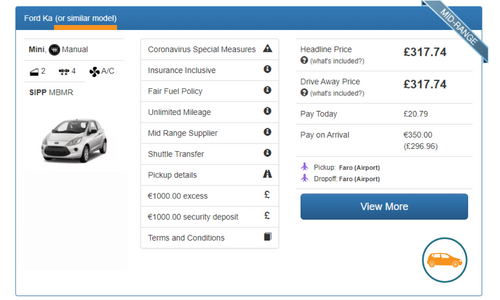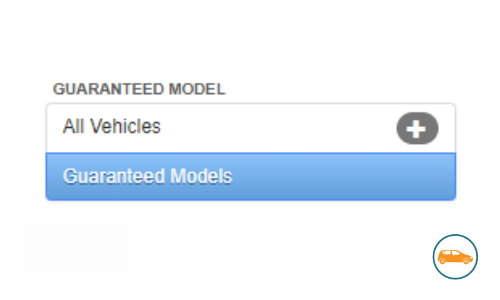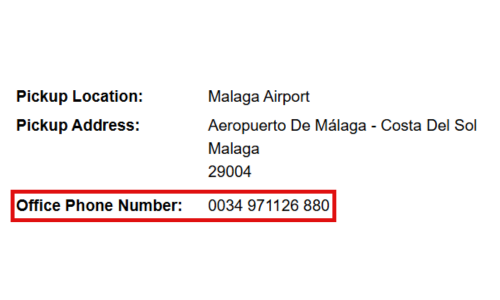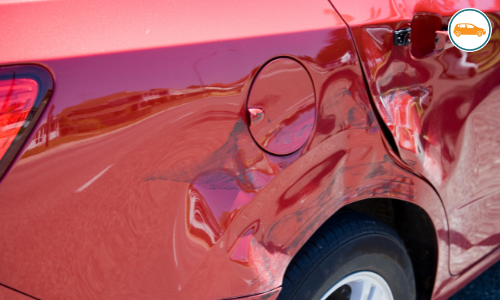Legal Requirements for Child Seats and Winterisation in US States and Territories
Legal Requirements for Child Seats in US States and Territories:
Alabama Infants and babies younger than 1 year old and under 20 lbs must be in a rear-facing child seat. Children aged 1 to 5 years old and under 40 pounds can be in a front-facing seat. 5 and 6 year old children must use a booster seat. Any child older than 6 and weighing more than 40 pounds does not need to sit in a car or booster seat but must use a seat belt.
Alaska Infants and babies younger than 1 year old and under 20 lbs must be in a rear-facing child seat. Children aged 1 to 4 years old and over 20 lbs must use a child safety seat. Children aged over 4 and under 8 years old who are under 57" tall or less than 65 lbs must use a booster seat.
American Samoa Children under 3 years of age must be transported in an approved special child seat in American Samoa. Children who are aged 3 – 4 years of age must be restrained in an approved child passenger restraint system or restrained by a seat belt assembly.
Arizona Children under the age of 5 years must be properly restrained in a child restraint system. Children aged between 5 and 7 years and under 57" tall must use a booster seat.
Arkansas Children up to 6 years of age and under 60 lbs must be properly restrained in a child safety seat; however, the safest practice is that children remain in a belt-positioning booster seat until 8-years-old (unless they are 4'9" tall).
California Children under 2 years of age must use a rear-facing car seat until they weigh 40 lb or more or are at least 40 inches tall. Children must be seated in the rear seat in an appropriate car seat or booster seat until they are 8 years old or 57” tall.
Colorado Children under 1 year old and less than 20 lbs must use a rear-facing seat in the back seat only. Children aged 1 to 3 years and between 20 and 40 lbs may use a rear or forward-facing safety seat. Children aged 4 to 7 years and over 40 lbs must use a forward-facing safety seat or a booster seat.
Connecticut Children must ride in a rear-facing seat until they are at least 2 years old and weigh 30 lbs. Toddlers must remain in a forward-facing, five-point harness car seat until they are at least 5 years and 40 lbs. Children should ride in a booster seat until they are at least 8 years old and 60 lbs.
Delaware All children must be properly restrained in a federally approved child safety seat appropriate for the child's age, weight and height up to 8 years of age or 65 lbs whichever comes first.
District of Colombia DC law requires that any child up to 16 years of age must be in a properly installed child safety seat or restrained by a seat belt. Children under 8 years of age must be properly seated in an installed infant, convertible (toddler) or booster child seat, according to the manufacturer's instructions.
Florida Florida law requires children age 5 and under to be secured properly in a federally approved child restraint device.
Georgia Georgia law requires all children under the age of 8, or under 57” in height, to sit in the back seat of the vehicle in a car seat or booster seat as age permits.
Guam In Guam, children under 4 years old must use a child safety seat. Children between the ages of 4 and 11 years old and under the height of 4 feet, 9 inches are required to use a booster seat.
Hawaii Hawaii law requires children under the age of 4 to ride in a child safety seat and children aged 4 to 7 years to ride in a child safety seat or booster seat when travelling in a motor vehicle.
Idaho Children should use a child safety seat until they are 57” tall, typically between 8 and 12 years old. Children should ride in the back seat until they're at least 13 years old.
Illinois Children under age 2 must be properly secured in a rear-facing child restraint system unless they weigh more than 40 pounds or are more than 40 inches tall. Children must remain rear-facing until age 2. All children under the age of 8 years old must be secured in a child safety seat.
Indiana All children under the age of 8 must be properly restrained in a child safety seat or booster seat. Children under the age of 1 year and less than 20 lbs must be restrained in a rear-facing child safety seat.
Iowa Iowa child car seat laws require all children from birth until the age of 1 year, or under 20 pounds, to ride in a rear facing child restraint system. Children under 6 years old and over 20 pounds may switch to a forward-facing child safety seat or booster seat. Children between the ages of 6 and 11 years must be secured in a child restraint system or by a safety belt.
Kansas Kansas law requires all children younger than 8 years old to use a child restraint system, unless the child weighs more than 80 lbs or is taller than 57”. Children under 1 year old must always ride in a rear-facing car seat. Children ages 4 - 7 years, and under 80 lbs, may use a booster seat.
Kentucky In Kentucky, any child 40 inches tall or less is required to use a child restraint system. It is recommended that children remain in a rear facing car seat for as long as possible. Any child younger than 8 years old and between 40 and 57 inches tall must ride in a child booster seat. A booster seat should only be used once the child has outgrown all other car seat options.
Louisiana Any child younger than 1 year old or who weighs less than 20 pounds is required to use a rear facing car seat. Children between the ages of 1 and 4 years old, or who weigh between 20 and 40 pounds are required to use a forward-facing car seat. Children between the ages of 4 and 6 years weighing more than 40 pounds may use a booster seat.
Maine A child car seat is required for all children who weigh less than 40 pounds. A child car seat or booster seat must be used by all children who weigh between 40 and 79 pounds and who are younger than 8 years old. Children who cannot yet safely use a regular seat belt should continue to use the booster seat option, regardless of age. All children younger than 12 years old and who weigh less than 100 pounds are required to sit in the back seat of a vehicle, if possible.
Maryland Maryland's current law requires children under 8 years old to ride in an appropriate child restraint, unless the child is 4'9" or taller.
Massachusetts Children must ride in federally approved child safety seats until they are at least 8 years old or over 57 in tall.
Michigan Children under 4 years old must be properly secured in an approved safety seat in the rear of the vehicle. Children weighing under 20 lbs must face the rear of the vehicle. Older children must be seated in a booster seat until they are at least 8 years old or 4 ft 9 inches tall.
Minnesota Children under 8 years old, or under 4 ft 9 inches tall must use a federally-approved safety or booster seat. Infants weighing less than 20 lbs must ride in a rear-facing car seat.
Mississippi All children under 7 years old are required to ride in a child safety seat. Infants and toddlers should use rear-facing seats until they are at least 2 years of age. Toddlers and pre-schoolers should use forward facing car seats. Children between the ages of 8 and 12 years old should use a booster seat until they are 4 feet 9 inches tall. All children younger than 13 should be in rear seats with a seat belt securely fastened.
Missouri Missouri law states that children should stay in a rear-facing child safety seat until 1 year old and 20 lbs. A child under 4 years old or weighing under 40 lbs must be secured in a child safety seat. A child aged 4 to 7 years old, weighing at least 40 lbs must be in a child passenger restraint system or booster seat until they are at least 80 lbs or 4 feet 9 inches tall.
Montana Montana law states that children under 6 years old or weighing less than 60 lbs must ride in a child safety seat or booster seat.
Nebraska Children in Nebraska must ride rear-facing until they turn 2 or until they reach the car seat's weight and height limit. Children under 8 years old must use a child safety seat or booster seat.
Nevada Children who are younger than 6 years old and weigh less than 60 lbs must ride in an approved safety restraint system.
New Hampshire New Hampshire car seat law requires that a child younger than 18 years of age who is riding as a passenger must be secured by either a seat belt or child safety seat. A rear facing car seat should be used for children from birth to 3 years of age, as long as the weight and height restrictions of the car seat manufacturer are met. Any child younger than 6 years of age must be secured by a federally approved child restraint. A booster seat may be used by children aged 4 to 7 years of age.
New Jersey Any child under 8 years old and 57 inches tall must use a child safety seat or booster seat in the rear of the vehicle. A child under the age of 2 years and 30 pounds must use a rear-facing seat equipped with a 5-point harness.
New Mexico Children under 1 year old must be properly secured in an approved rear-facing safety seat in the rear of the vehicle. Children between the ages of 1 and 4 years old and those weighing under 40 lbs must use an approved safety seat. Children aged 5 and 6 years old and those weighing under 60 lbs must be properly secured in an approved booster seat or another appropriate car seat. Children between 7 and 12 years old may be properly secured in a car seat or booster seat, or by a seat belt.
New York New York State law requires that any child under 4 years old must ride in an approved child safety seat. Children between 4 and 8 years old must be secured in a child safety seat or booster seat. From 1 November 2019 all children under the age of 2 will have to use a rear-facing car seat until they are two years old or reach the highest weight or height limit allowed by the manufacturer of the car seat.
North Carolina In North Carolina children under 8 years old and weighing under 80 lbs must use a child safety seat or booster seat.
North Dakota All children 7 years old or younger, weighing less than 80 lbs and under 57” tall, must ride in either a booster seat or a child car safety seat. Children between the ages of 8 and 17 years old must either wear a seat belt or be seated in a child restraint. This applies to both the front and back seats.
Northern Mariana Islands In the Northern Mariana Islands any child aged under age 5 years or less than 70 pounds must be in a car seat. Any child older than 5 years or more than 70 pounds must wear a safety belt.
Ohio Ohio law requires children under 4 years old or less than 40 lbs to use a child safety seat. Children under 8 years old must use a booster seat if they are 4 feet 9 inches or under.
Oklahoma Children under 2 years old must be in a rear facing safety seat. Children under 4 years old must be restrained in a federally-approved safety seat with an internal harness when riding in a vehicle. Children 4 to 7 years old must be restrained by an appropriate safety system or booster seat unless they are taller than 4 ft 9 inches.
Oregon Infants must ride in a rear-facing child seat until they are 2 years old and reach the upper weight limit for the car seat. Children weighing 40 lbs or less must use an approved child safety seat. Children weighing over 40 lbs, or who reach the upper weight limit of their child safety seat, are required to use a booster seat until they reach 4 ft 9 in tall or turn 8 years old.
Pennsylvania Under Pennsylvania law, children under 2 years of age must be securely fastened in a rear-facing child passenger restraint system, until they outgrow the maximum weight and height limits. Children under the age of 4 must be properly restrained in an approved child safety seat. Children from age 4 up to age 8 must be restrained in an appropriate booster seat.
Puerto Rico In Puerto Rico child seats are required to be used for children under 4 years old. Booster seats are required for children between 4 and 8 years who are under 4'9" tall and less than 80 pounds in weight. Children under 12 years old must travel in the back seat of a car.
Rhode Island Infants under 2 years of age or lighter than 30 lb in weight must be restrained in a rear-facing child seat. Children over 2 years of age who have outgrown the height and weight recommendations for their rear-facing seat should use a forward-facing child safety seat. Children under 8 years old, less than 57 inches tall, and weighing less than 80 lbs must be transported in the rear seating position of a vehicle and properly restrained in a child restraint system.
South Carolina All children under 8 years old must be properly restrained by an approved child safety seat. Children under 2 years old must be in a rear-facing child safety seat in a rear passenger seat of the vehicle unless the child exceeds the manufacturer's weight or height limits. Children 2 years old and over must be in a forward-facing child safety seat in a rear passenger seat until they exceed the manufacturer's weight and height limits. Children at least 4 years old, must be in a belt-positioning booster seat in a rear passenger seat, secured with a lap and shoulder strap.
South Dakota All children under 5 years old and who weigh less than 40 lbs must ride in federally-approved car seat or booster.
Tennessee Children younger than 1 year old or weighing 20 lbs or less must be properly secured in an approved rear-facing child passenger restraint system. Children between 1 and 3 years old weighing more than 20 lbs must be properly secured in an approved forward-facing or rear facing child passenger restraint system. Children 4 to 8 years old and less than 4 ft 9 in tall must be properly secured in an approved belt-positioning booster seat system in the rear of the vehicle.
Texas Children under 8 years old must use a safety seat unless they are more than 4 ft 9 in tall. Although not required by law, Texas recommends: rear-facing seats for all children until they either turn 2 years old and reach 35 lbs or outgrow the height and weight limits of the child seat; forward-facing seats for children 2 years old and above until they outgrow the height and weight limits of the safety seat (typically around 4 years old); booster seats for children 4 years old and above and 40 lbs or more until the adult safety belt fits properly.
Utah All children under 8 years old must be properly secured in an approved child safety seat, unless they are at least 57 inches tall. Children between 8 and 12 years old must be properly restrained in either an appropriate child restraint device or by a safety belt.
Vermont All children under the age of 1 year, and/or weighing less than 20 pounds shall be restrained in a rear-facing position, properly secured in an approved child safety seat in the rear of the vehicle. A child weighing more than 20 pounds, aged 1 year or above and under the age of 8 years, shall be restrained in an appropriate child safety seat and a child aged between 8 and 15 years of age shall be restrained either with a safety belt or a child safety seat.
Virginia In Virginia children 7 years and under must be restrained in a car seat or booster seat in the back seat of a vehicle. An adult safety belt is permissible for children ages 8-17. From 1 July 2019 children must remain rear-facing in their car seats until age 2 or the minimum weight limit called for by the car seat manufacturer.
Virgin Islands Any child under age 5 must be in a car seat. Children aged 3 to 5 may use a seat belt but must ride in the back of the car.
Washington Children younger than 8 years old must be secured in some form of child safety system unless they are 4 ft 9 in or taller and the seat belt fits correctly. Children aged 8 years or older, or taller than 4 ft 9 in, must either use a child restraint or a secure seat belt. Children under the age of 13 years old should ride in the backseat whenever it is practical.
West Virginia In West Virginia, children under 8 years old and 4 ft 9 in tall or shorter must travel in an approved child safety seat.
Wisconsin Children aged 4 years or younger and weighing 40 lbs or under, must travel in a child safety seat. Children under 1 year old, or weighing less than 20 lbs, must be in a rear-facing child seat in the back seat of the vehicle. Children under 8 years old must use an approved safety seat or booster seat until they are over 80 lbs in weight, or taller than 4 ft 9 in.
Wyoming Children must be properly restrained whether in a rear-facing, forward-facing, or booster seat. Generally children 8 years old and younger must be in a child seat in the back of the car.
Legal Requirements for Winterisation in US States:
Alabama The use of snow chains is permitted on any vehicle when required for safety reasons because of snow, rain, or other conditions tending to cause a vehicle to slide or skid.
Alaska Snow chains are not permitted on paved roads north of 60 north latitude between 1 May and 15 September. Snow chains are not permitted on paved roads south of 60 north latitude between 15 April 15 and 30 September. No snow chains are permitted anywhere on Sterling Highway between 1 May and 15 September.
Arizona The use of snow chains is permitted for safety reasons because of snow, ice, or rain that might cause a vehicle to skid or slide. Studded tyres are permitted on Arizona highways from 1 October to 1 May.
Arkansas It is permissible to use snow chains on any vehicle when required for safety reasons.
California During the winter months, there may be traction chain controls in the mountain areas within California. Signs will be posted along the road indicating the type of requirement: R1 - Chains, traction devices or winter tyres required on all except four wheel drive vehicles; R2 - Chains or traction devices required on all except four wheel drive vehicles with winter tyres on all wheels; R3 - Chains or traction devices required on all vehicles.
Colorado All vehicles need to have adequate tyres and equipment when travelling in Colorado during the winter. There are two levels of the chain law affecting commercial motor vehicles only.
Connecticut Snow chains are permitted in the event of hazardous weather or other related incidents only, but may not damage the highway surface. Snow chains are only permitted between 15 November and 30 April.
Delaware Snow tyres or chains are allowed when there is snow on the road.
District of Columbia Snow chain usage is permitted for hazardous weather or other related incidents only, but may not damage the highway surface.
Florida There are no snow chain laws.
Georgia Snow chains or winter tyres are permitted if the road conditions require extra traction.
Hawaii (Maui) Snow chains are permitted if required to prevent skidding or slipping.
Idaho It is permissible to use snow chains. The Idaho transportation department may determine at any time that Lookout Pass or Fourth of July Pass on interstate 90 or Lolo Pass on state highway 12 is in an unsafe condition so as to require chains.
Illinois The use of snow chains is permitted when required for safety reasons because of snow, ice, or other conditions tending to cause a vehicle to skid.
Indiana The use of snow chains is permitted when required for safety reasons because of snow, ice, or other conditions tending to cause a vehicle to skid.
Iowa The use of snow chains is permitted when required for safety reasons because of snow, ice, or other conditions tending to cause a vehicle to skid.
Kansas The use of snow chains is permitted when required for safety reasons because of snow, ice, or other conditions tending to cause a vehicle to skid.
Kentucky Chains are required for safety reasons only. Snow chains must not be used on a highway not covered with ice unless the wheel rests upon an ice-shoe at least 6 inches wide.
Louisiana The use of snow chains is permitted when required for safety reasons because of snow, ice, or other conditions tending to cause a vehicle to skid.
Maine The use of snow chains is permitted when required for safety reasons because of snow, ice, or other slippery conditions.
Maryland The use of snow chains is permitted when required for safety reasons because of snow, ice, or other conditions tending to cause a vehicle to skid.
Massachusetts The use of snow chains is permitted when required for safety reasons because of snow, ice, or other slippery conditions.
Michigan The use of snow chains is permitted when required for safety reasons because of snow, ice, or other conditions tending to cause a vehicle to skid. If used, the snow chains must not come into contact with the surface of the roadway.
Minnesota The use of snow chains is permitted when required for safety reasons because of snow, ice, or other slippery conditions.
Mississippi The use of snow chains is permitted when required for safety reasons because of snow, ice, or other slippery conditions.
Missouri Snow chains are permitted as the weather dictates.
Montana If the department of transportation determines at any time that dangerous or unsafe conditions on a highway require particular tyres, snow chains, or traction equipment for vehicles in addition to or beyond the ordinary pneumatic rubber tyres, it may recommend or require the use of chains or other approved traction devices for driver wheels.
Nebraska The use of snow chains is permitted when required for safety reasons because of snow, ice, or other slippery conditions.
Nevada It is unlawful for any person to operate a motor vehicle without traction devices, snow chains, or winter tyres upon any street or highway, under icy or snowy conditions, when the highway is marked or posted with signs requiring their use. In this event, a motor vehicle must be equipped with traction devices, snow chains or winter tyres if it has a gross weight of 10,000 pounds or less, or snow chains if it has a gross weight of more than 10,000 pounds.
New Hampshire The use of snow chains is permitted when required for safety reasons because of snow, ice, or other slippery conditions.
New Jersey The use of snow chains is permitted when required for safety reasons because of snow, ice, or other slippery conditions.
New Mexico The use of snow chains is permitted when required for safety reasons because of snow, ice, or other slippery conditions.
New York The use of snow chains is permitted when required for safety reasons because of snow, ice, or other slippery conditions.
North Carolina The use of snow chains is permitted when required for safety reasons because of snow, ice, or other slippery conditions.
North Dakota Every trailer or semitrailer when operated upon a highway at a speed in excess of twenty-five miles [40.23 kilometres] per hour must be equipped with safety chains or brakes adequate to control the movement of and to stop and to hold such vehicle and so designed as to be applied by the driver of the towing motor vehicle from its cab, and said brakes must be so designed and connected that in case of an accidental breakaway of the towed vehicle the brakes are automatically applied that it is permissible to use snow chains of reasonable proportions.
Ohio The use of snow chains is permitted when required for safety reasons because of snow, ice, or other slippery conditions.
Oklahoma The use of snow chains is permitted when required for safety reasons because of snow, ice, or other slippery conditions.
Oregon The use of snow chains is permitted when required for safety reasons because of snow, ice, or other slippery conditions.
Pennsylvania The use of snow chains is permitted when required for safety reasons because of snow, ice, or other slippery conditions.
Rhode Island The use of snow chains is permitted when required for safety reasons because of snow, ice, or other slippery conditions.
South Carolina The use of snow chains is permitted when required for safety reasons because of snow, ice, or other slippery conditions.
South Dakota The use of snow chains is permitted when required for safety reasons because of snow, ice, or other slippery conditions.
Tennessee The use of snow chains is permitted when required for safety reasons because of snow, ice, or other slippery conditions.
Texas The use of snow chains is permitted when required for safety reasons because of snow, ice, or other slippery conditions.
Utah When any designated highway is so restricted no vehicle shall be allowed or permitted the use of the highway, during the period between 1 October and 30 April, or when conditions warrant due to adverse, or hazardous weather or roadway conditions, as determined by the Utah Department of Transportation.
Vermont When snow chains or winter tyres are required, advance notice shall be given to the travelling public through signage and, whenever possible, through public service announcements. In areas where snow chains or winter tyres are required, there shall be an adequate area for vehicles to pull off the road to affix any chains that might be required.
Washington The use of snow chains is permitted when required for safety reasons because of snow, ice, or other slippery conditions. On some routes all vehicles over 10,000 lbs gross vehicle weight rating are required to carry tyre chains from 1 November to 1 April each year or at other times when chains are required for such vehicles.
West Virginia The use of snow chains is permitted when required for safety reasons because of snow, ice, or other slippery conditions.
Wisconsin The use of snow chains is permitted when required for safety reasons because of snow, ice, or other slippery conditions.
Wyoming When the snow chain law is in effect due to snow, ice, or other conditions, travel on a highway may be restricted to use only by motor vehicles utilising adequate winter tyres or snow chains.















